In the minds of many people, fungus patients are often related to untidy, lazy and dirty. This stereotype is not entirely correct. In the modern world, even the most pedantic cleaning is not immune to fungal infections. In addition, compared with traditional couch potatoes, a person who leads an active and healthy lifestyle is more susceptible to infection. If the skin between your toes turns red, peeling, cracked, nails turn yellow, chipped, or unbearable itching does not leave for a minute, it is likely that you have a fungus.
Path of infection
Medical statistics show that 4-5 out of every 4-5 people on the planet suffer from toe fungal disease. The risk of infection is everywhere: swimming pools, saunas, gyms, public showers, shoe stores, beaches, and even your own shoes often become an excellent environment for fungus survival and active reproduction.
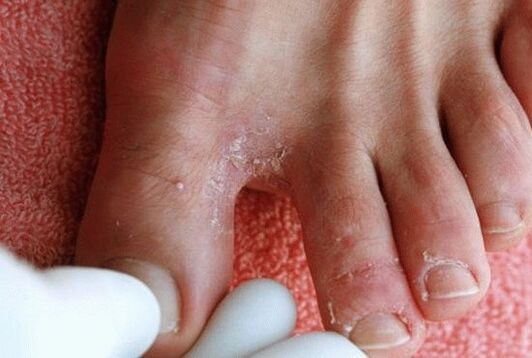
Walking barefoot, wearing someone else’s or wet shoes, sharing personal hygiene products (towels, manicures, and pedicure tools), dirty socks, excessive sweating, degenerative foot diseases, overweight, circulatory disorders-these and othersFactors directly or indirectly lead to fungal infections.
Healthy nails are almost immune to fungus, and the nail plate that changes under the influence of certain traumatic factors can easily become his prey. The same happens to the skin-tiny cracks in the skin become the entrance of infection.
In most cases, infections are caused by fungal parasites called dermatophytes, and less often by yeasts and molds. Toe fungus is also ill in men and women. The risk of infection increases with age. Therefore, children are relatively few victims of this parasite, and every other adult after the age of 70 is an active carrier of it.
Initial manifestations of toe fungus
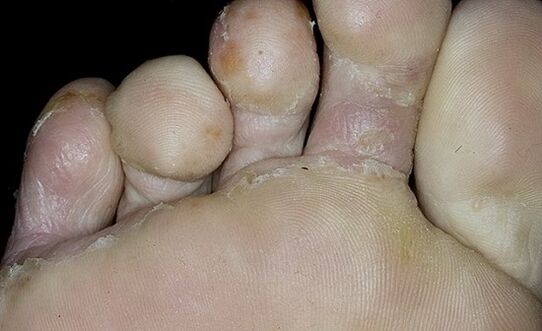
In most cases, fungal foot lesions occur gradually according to the following pattern:
- The first signs of skin peeling, burning and itching are observed between the toes;
- The skin reacts to the infection, forming bubbles, which burst after a period of time;
- Cracks and grooves appear at the air bubbles; increased itching;
- On the nails, the fungus actively multiplies and gradually penetrates the nail plate, destroying it slowly and for a long time;
- The board becomes thick, peeled, and chipped, giving it an unnatural yellow color.
Dermatophytes appear as bright yellow spots or streaks near the edge of the nail. Over time, the infection will transfer to the central part, cracks will appear in the skin between the fingers, and severe itching will be felt. Yeast fungus feeds on the nail plate and thins it from the side. As a result, waves, furrows, cracks appeared, and nails turned yellow and separated from the bed. First, yeast attacks nail folds. They turned red, thickened and swelled, with silver scales appearing on the edges. It may be accompanied by secondary bacterial infection and subsequent suppuration. Mold affects nails from the surface, changing their hue from yellow and green to brown or even black. These fungi are particularly active when the nutrition of the nail plate is impaired.
Why don't you hesitate to see a doctor?
Treatment should be started as soon as possible. It would be great if this happens before the infection (usually between the toes first) spreads to the nail plate. Seeing a doctor early can ensure faster healing and healthier nails.
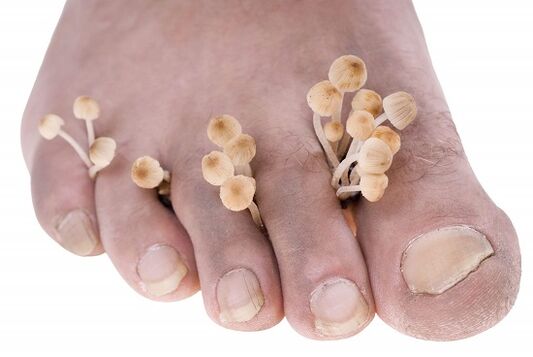
Mycologists are engaged in the treatment of various fungal skin lesions (mycoses). It is difficult to find this type of doctor in a state clinic. If you don't have it, you can consult a dermatologist. The task of the expert is to assess the extent and depth of the lesion, perform tissue scraping to determine the presence and type of fungus, and formulate an effective treatment plan.
Before starting treatment, it is necessary to carry out disinfection measures, including treating all shoes with vinegar or formalin solution. The unpleasant smell of these products makes them inconvenient to use. To solve this problem, you can purchase a special device that uses ultraviolet rays to disinfect shoes in the pharmacy.
Traditional treatment of toe fungus
Toe fungus can be treated with local, systemic or combination therapy.
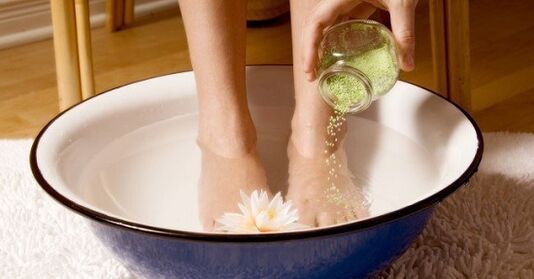
Any treatment involves the use of antifungal agents (antifungal agents):
- Local treatment (ointment, cream, spray). External antifungal drugs and other drugs with clotrimazole, naftifine hydrochloride, ketoconazole, terbinafine hydrochloride or bifonazole as active ingredients. If the nail plate is slightly damaged, it is recommended to use an anti-fungal varnish. The varnish is used throughout the year, gradually reducing the frequency of use (from 4 to 1 time per week). Local remedies can effectively relieve itching and burning, reduce peeling between toes and skin cracks, but cannot completely cure the disease.
- Systemic treatment: general antifungal drugs. In the case of complete damage to the deck, this treatment is appropriate. However, systemic antifungal drugs have certain contraindications: pregnant and lactating women, patients with kidney and liver diseases, and young children cannot take them.
- Comprehensive treatment. Including local and systemic treatments.
Patients often complain about the lack of efficacy of traditional therapies and turn to folk remedies for help. In the context of such complaints, the opinion that foot fungus is an incurable disease can only temporarily eliminate its symptoms (itching, peeling, cracks). Why is the patient's dissatisfaction observed? Everything is very simple. In fact, it is difficult to cure a fungus completely, but it is also possible. Mainly adhere to the principle of regularity and continuity. It is very important to do all the therapeutic activities every day and not interrupt what you start halfway through. You need to prepare for long-term treatment (usually 3 to 12 months), it makes sense to treat before new healthy nails grow back. In advanced cases, it is necessary to remove the affected nail plate and then wait for a new nail plate to appear.
Treat toe fungus with folk remedies
Traditional pharmaceutical formulations are very effective in eliminating or reducing the severity of fungal manifestations, such as itching, burning, cracking, peeling and redness of the skin between the toes. Some patients claim that they can completely cure the disease using folk remedies.
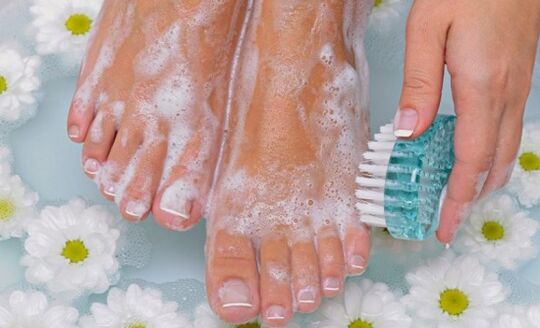
So, to deal with fungi:
- Soak your feet with apple cider vinegar, wine vinegar or vinegar.
- Put a drop of iodine on each nail twice a day;
- Wipe skin and nails with salicylic acid ointment;
- Wash your feet with laundry soap;
- Make garlic and butter compresses;
- Lubricate the affected skin with a mixture of garlic juice, alcohol (1 tablespoon each) and water (2 tablespoons);
- Treat the affected area with an alcohol tincture of propolis.
According to reviews, garlic and propolis are particularly effective in fighting fungi. It is important to understand that the duration of treatment with folk remedies has its limitations. If the skin cracks and looks different within 3 months, it makes sense to seek help from traditional medicine.
Although folk remedies have good results and modern medicines have succeeded in the invention of new medicines, foot mycosis is still the most common mycosis. Nevertheless, it is gratifying that the number of successfully cured patients has been declining year by year in the past 20-30 years.

























